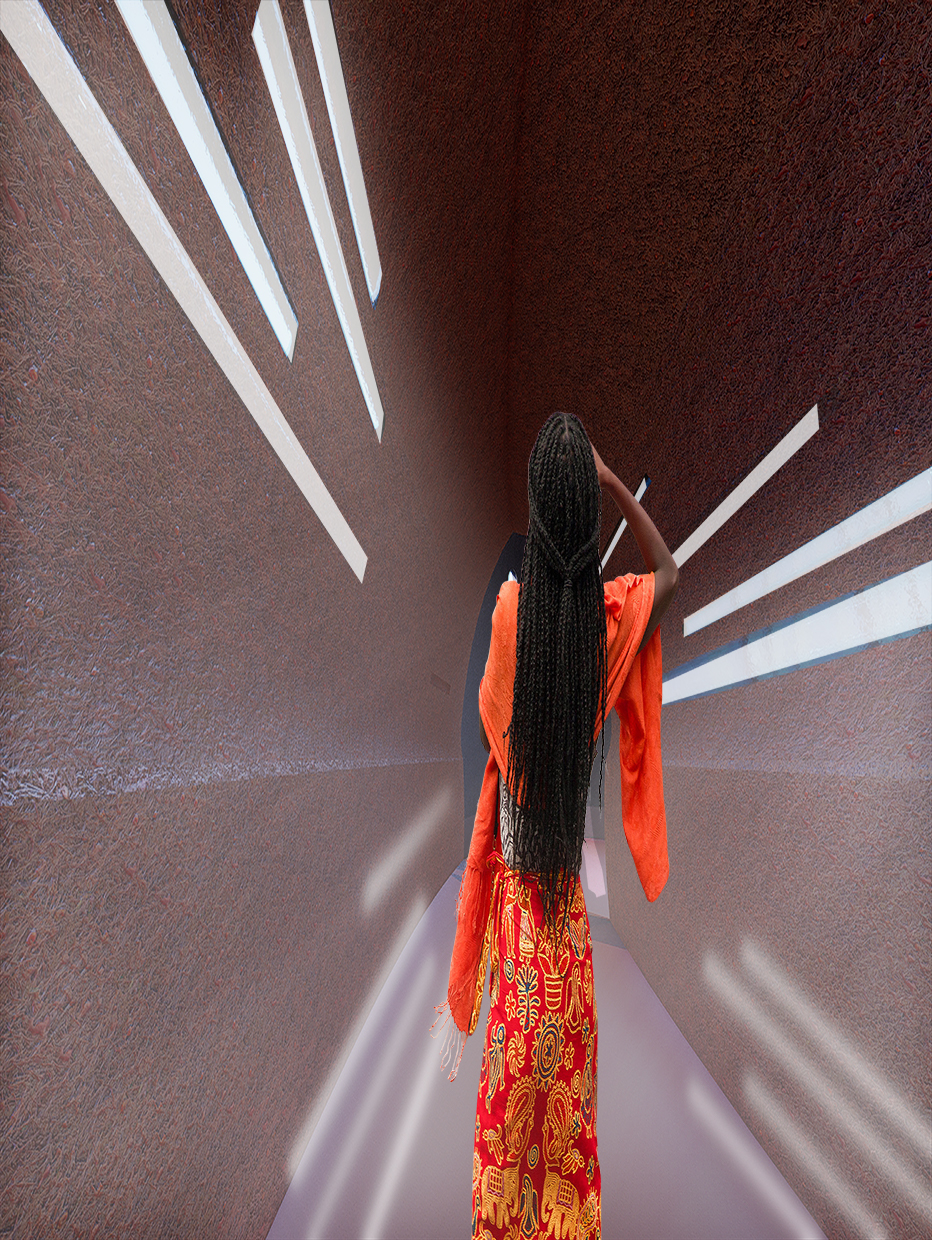Light Bottle

Category
Daylight investigations - Region 5: Africa
Students
NANKENG Erica Reine
AKABZIE ETOUNDI Michel Tanguy
School
École Nationale Supérieure des Travaux Publics
Country
Cameroon
Download
Download ↓
Presentation of the targeted objectives Over the years, Cameroon has undergone and continues to undergo a deep rooting of Western cultures in their customs and cultures. With the primary goal of making a good contribution to the past for a cultural reconsideration of our architecture which has been neglected for Western construction methods and which does not suit our environment. The second is to reintroduce the contemporary architecture of the local people while bringing back a touch of modernity. A touch of modernity that will enter through a multitude of light sources carefully arranged to give a new vision to the peoples of this region.Location and description of the siteThe Mousgoum territory is located in the Cameroonian plains. The mousgoum people who have lived for a long time according to their traditions and their culture have an architecture that has been talked about in the world case has its case called case mousgoum or teleuk. However, today the teleuk box is endangered because Cameroonians consider the earth as a poor and not modern material.Cameroon has been confronted during these five decades with uncontrolled urbanization which has also negatively impacted the field of traditional Cameroonian architecture as well as an increase in temperatures in these areas of global warming. The location of the site is in an area with extreme weather conditions, the climate is tropical semi-arid said monsoon characterized by two seasons, so a dry season from November to April (38-43 ° C) and a wet season from May to October (35-40°C). Having direct solar radiation between 252-269 W/m² and diffuse solar radiation between 111-117W/m²Description of the hutThe shell hut takes its name from its conical shape, the dimensions of which are approximately 7 to 5 m in diameter depending on the conical height, a surface close to 9 m², its thickness being 50 to 5 cm, streaked with numerous grooves which serve both as scaffolding, buttress, and drainage system. The door which is the only exit at a height of 1.80m for a width of 0.70m, this one is covered by a curtain in rod of secco, the floor in embankment of sand. They are ecologically sustainable tall conical dwellings made of 35% suksukiy grass, 60% soil and 5% excrement. The temperature inside is 29-33°C in the dry season and 24-30°C in the wet season. The wall gradually approaching in the shape of a dome until an opening at the top of about 15cm in radius. Through it air and light can enter the hutch but in very small quantities and in the wet season precipitation infiltrates easily unless it is covered by a straw hat which is not always efficient.Explanation of the lighting principleFor human beings, light is the most important energy. Necessary to appreciate the visual panorama of our daily life, the latter is present in the mousgoum huts but in very small quantities. Following this, to overcome this problem and guarantee visual comfort, a lighting principle was set up based on the use of plastic bottles which persist in the area (which is a planetary pollutant) in order to limit the plastic bottle pollution.MaterialsAs materials used the construction of our mousgoum hut is made of noble materials such as suksukiy grass, earth, clay, animal manure, bamboo plus plastic bottlesEnvironmental impactAs an impact on the environment, we will say that the hut of the teuleuks since its design idea, is noble through its construction materials. It is therefore up to us here not to sell its properties from an environmental point of view but to show what new we are proposing to improve not only the quality of lighting and natural ventilation inside the hut but also of make a contribution to the fight against global warming by using the plastic bottle as a building material.

































